 W
WApproach angle is the maximum angle of a ramp onto which a vehicle can climb from a horizontal plane without interference. It is defined as the angle between the ground and the line drawn between the front tire and the lowest-hanging part of the vehicle at the front overhang. Departure angle is its counterpart at the rear of the vehicle – the maximum ramp angle from which the car can descend without damage. Approach and departure angles are also referred to as ramp angles.
 W
WAutomotive Grade Linux (AGL) is an open source project hosted by The Linux Foundation that is building an open operating system and framework for automotive applications. AGL was launched in 2012 with founding members including Jaguar Land Rover, Nissan, Toyota, DENSO Corporation, Fujitsu, HARMAN, NVIDIA, Renesas, Samsung and Texas Instruments (TI). Today, AGL has 146 members.
 W
WAxle track in automobiles and other wheeled vehicles which have two wheels on an axle, refers to the distance between the hub flanges on an axle. Wheel track, track width or simply track refers to the distance between the centerline of two wheels on the same axle. In the case of an axle with dual wheels, the centerline of the dual wheel assembly is used for the wheel track specification. Axle and wheel track are commonly measured in millimetres or inches.
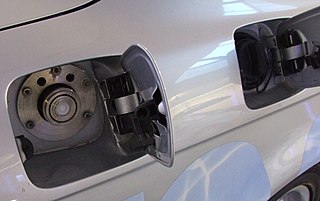 W
WBMW CleanEnergy vehicles have both a hydrogen and a petrol tank. If one of the tanks is empty, the bivalent BMW engine unit switches over automatically to the other fuel system. One decisive advantage of the combustion engine is bivalence. It enables both hydrogen and petrol to be used, thus creating the ideal conditions for a transition from non-regenerative to regenerative drive energies. During electrolysis water is split into its components of hydrogen and oxygen. The hydrogen is stored and the oxygen is needed in the vehicle for the combustion of the hydrogen. The combustion process generates energy and water as a waste product, which returns to the natural water cycle. And so with the aid of regenerative energy suppliers, a theoretically emission-free fuel is obtained.
 W
WThe Elsbett engine is an 89 HP, direct-injection diesel engine designed to run on straight vegetable oil. The engine is also known as Elko engine and was invented by Ludwig Elsbett.
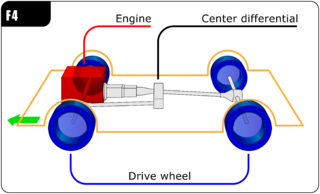 W
WIn automotive design, an F4, or front-engine, four-wheel drive (4WD) layout places the internal combustion engine at the front of the vehicle and drives all four roadwheels. This layout is typically chosen for better control on many surfaces, and is an important part of rally racing, as well as off-road driving.
 W
WA genset trailer is a range extending device for use with battery electric vehicles consisting of an internal combustion engine and an electric generator. They run on traditional fuels such as gasoline or diesel and are sized to provide the continuous power requirements for the vehicle they are used with. Most small to midsized passenger vehicles would require 15 to 20 kW for unlimited freeway travel using fuel. Larger vehicles could require 30 kW (40 hp) or more of power depending on how heavy or un-aerodynamic they happen to be. This essentially converts an electric vehicle into a series-hybrid.
 W
WGrousers are devices intended to increase the traction of continuous tracks, especially in loose material such as soil or snow. This is done by increasing contact with the ground with protrusions, similar to conventional tire treads, and analogous to athletes' cleated shoes. On tanks and armoured vehicles, grousers are usually pads attached to the tracks; but on construction vehicles they may take the form of flat plates or bars.
 W
WIn the study of mechanical networks in control theory, an inerter is a two-terminal device in which the forces applied at the terminals are equal, opposite, and proportional to relative acceleration between the nodes. Under the name of J-damper the concept has been used in Formula 1 racing car suspension systems.
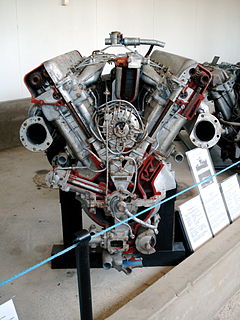 W
WThe Kharkiv model V-2 was a Soviet diesel tank V-12 engine designed at the Kharkiv Locomotive Factory by Konstantin Chelpan and his team. It is found in the BT-7M (BT-8), T-34, KV, IS and IS-10 (T-10) tanks, and by extension, the vehicles based on them, such as the SU-85 and SU-100 tank destroyers based on the T-34 and the ISU-122 and ISU-152 self-propelled guns based on the IS-2. Throughout its production life, output ranged from roughly 450-700 hp. The water-cooled engine was made of aluminium.
 W
WTires provide for steering, traction, braking, and load support by transmitting forces between the vehicle and the road. Lateral force variation (LFV) is a property of a tire that characterizes its dynamic behavior of these forces. High values of LFV for a given tire reflect a high level of manufacturing variations in the tire structure that will impart ride disturbances into the vehicle in the lateral, or steering, direction. LFV is measured according to processes specified by the ASTM International in ASTM F1806 – Standard Practice for Tire Testing.
 W
WThe Lexus 2054 is a concept car designed by Harald Belker for the 2002 Steven Spielberg film Minority Report. The vehicle was shown being built at an automated factory in the film, and later driven by star Tom Cruise in several action sequences.
 W
WThe Mercedes-Benz F100 is a concept car by then Daimler-Benz unveiled at the North American International Auto Show in 1991. The goal was to show off innovations in control, design, and comfort in passenger cars.
 W
WNUTmobile is a series of automobiles shaped like a peanut owned by Kraft Heinz which are used to promote and advertise Planters products in the United States. The first version was created in 1935. Drivers of the NUTmobile are known as “Peanutters”. Nine "Peanutters" are selected to drive three Nutmobiles across the country in the given year. These brand representatives are typically recent college graduates with degrees in advertising, marketing, public relations, communications. The University of Illinois at Urbana-Champaign has a history of recruiting students with representatives in 2014-2015, 2016-2017, 2018–2019, and 2019-2020. During the year, "Peanutters" travel across the country giving out peanut samples, Mr. Peanut memorabilia, and other products from the Planters brand. The program is based in Madison, WI and "Peanutters" go through two weeks of 'Peanut Prep' where they learn about speaking on behalf of the Planters brand, Planters history, and learn to drive the vehicles. Mr. Peanut also accompanies the "Peanutters" and is present at each event they attend offering photos, autographs, and hugs to interested customers.
 W
WIn automotive design, an R4, or Rear-engine, Four-wheel-drive layout places the internal combustion engine at the rear of the vehicle, and drives all four roadwheels.
 W
WRocker covers are covers that are bolted on over rocker arms in an internal combustion engine. They are called valve covers in the United States, Canada, and in situations where Rocker Arms are not present, such as some Overhead Cam, and most Dual Overhead Cam engines. and rocker boxes in the United Kingdom.
 W
WRoller burnishing is a surface finishing technique where hardened rollers cold work surface imperfections to reduce surface roughness. Roller burnishing differs from abrasive surface finishing techniques in that material is displaced rather than removed. The tooling typically consists of a hardened sphere or cylindrical roller. The tooling is pressed into the surface of the part while it is rotated. The burnishing tool rolls against the surface of the part at a constant speed, producing a very consistent finish across the part. A surface finish of less than Ra 0.1 µm is achievable with roller burnishing. A side effect is that the outer surface of the part is work hardened.
 W
WA Scott Russell linkage gives a theoretically linear motion by using a linkage form with three portions of the links all equal, and a rolling or sliding connection. It can be used to form a right-angle change of motion, linear-to-linear.
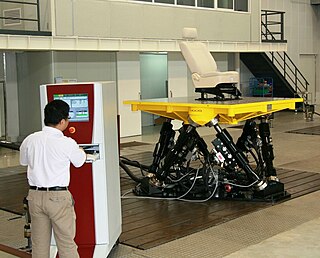 W
WA simulation table is an automotive test system specifically designed for the high-frequency testing of vehicle components. It is sometimes also called a Multi-Axis Shaker Table or MAST.
 W
WSprung mass, in a vehicle with a suspension, such as an automobile, motorcycle, or a tank, is the portion of the vehicle's total mass that is supported by the suspension, including in most applications approximately half of the weight of the suspension itself. The sprung mass typically includes the body, frame, the internal components, passengers, and cargo, but does not include the mass of the components at the other end of the suspension components, which are part of the vehicle's unsprung mass.
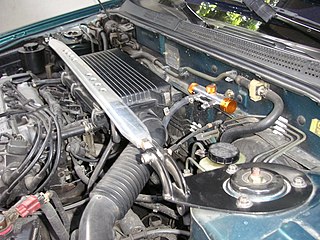 W
WA strut bar, strut brace, or strut tower brace (STB) is an automotive suspension accessory on a monocoque or unibody chassis to provide extra stiffness between the strut towers.